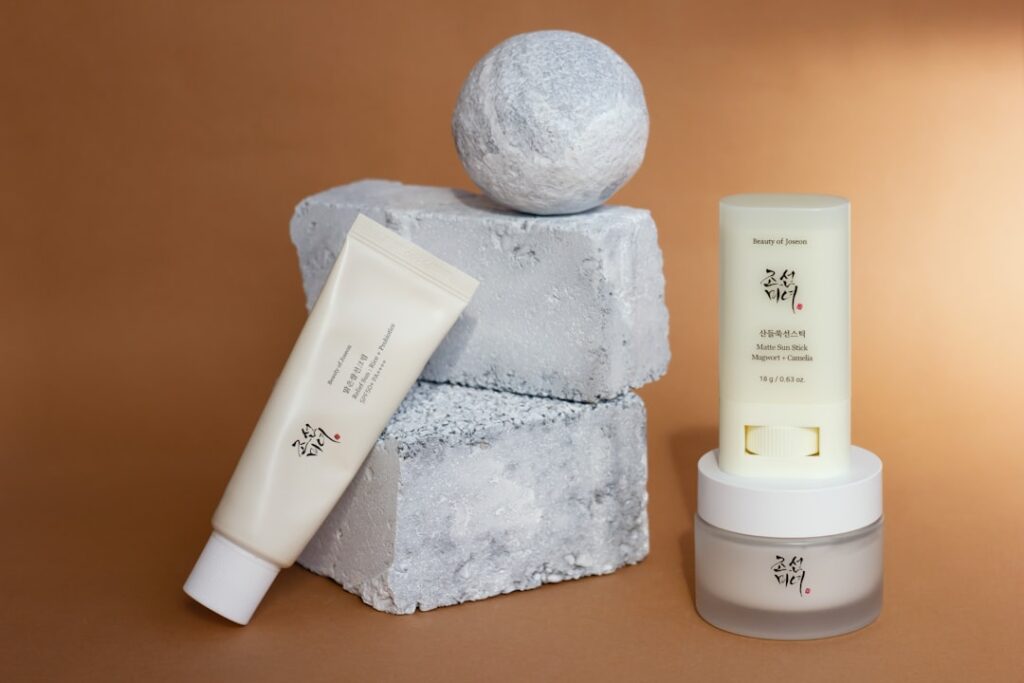In our fast-paced world, it’s easy to feel overwhelmed. The constant demands of work, family, social media, and global events can chip away at our inner peace, leaving us feeling stressed, anxious, or profoundly sad. Have you ever found yourself lying awake at night, mind racing, wishing for a moment of quiet calm? You’re not alone. The journey to mental well-being is not always a straight path, but with the right tools, it is one we can navigate successfully. This guide will illuminate **simple steps to protect mental health** and build a foundation for lasting resilience and joy in your daily life.

The Unseen Battle: Understanding Today’s Mental Health Challenges
Our mental health is just as crucial as our physical health, yet it often takes a backseat until a crisis emerges. The reality is, the pressures of modern life are creating a significant strain on our collective well-being. From the relentless pursuit of success to the constant comparison fueled by social media, stressors are abundant and often insidious.
The Pervasive Problem: Rising Stress, Anxiety, and Depression
Mental health conditions are on the rise globally. The World Health Organization (WHO) reports that one in eight people worldwide live with a mental disorder. This isn’t just about severe diagnoses; it encompasses a broad spectrum of challenges, from persistent low mood and chronic stress to debilitating anxiety attacks. These issues don’t discriminate, affecting people of all ages, backgrounds, and professions.
“Mental health is a state of well-being in which an individual realizes his or her own abilities, can cope with the normal stresses of life, can work productively and fruitfully, and is able to make a contribution to his or her community.” — World Health Organization (WHO), 2022.
Causes of the Strain: Modern Life’s Demands
Why are so many of us struggling? The causes are multifaceted:
- Digital Overload: Constant connectivity, the pressure to always be “on,” and the curated highlight reels of social media can foster feelings of inadequacy and isolation.
- Workplace Stress: Long hours, job insecurity, and demanding environments contribute significantly to burnout and anxiety.
- Economic Instability: Financial worries are a primary source of stress for many families and individuals.
- Social Disconnection: Despite living in an interconnected world, genuine human connection can be elusive, leading to loneliness.
- Global Crises: Pandemics, climate change, and geopolitical conflicts add layers of collective anxiety and uncertainty.
Impacts on Your Life: More Than Just “Feeling Down”
Poor mental health isn’t confined to your emotions. Its ripple effects can touch every aspect of your existence:
- Physical Health: Chronic stress can lead to headaches, digestive issues, weakened immune system, and cardiovascular problems.
- Relationships: Irritability, withdrawal, and difficulty communicating can strain connections with loved ones.
- Productivity and Performance: Concentration issues, lack of motivation, and fatigue can hinder work or academic performance.
- Quality of Life: A diminished capacity to enjoy hobbies, pursue passions, or find joy in daily activities.
Recognizing these challenges is the first, crucial step. It empowers us to understand that protecting our mental health isn’t a luxury; it’s a necessity for a full and flourishing life.

Building Your Inner Fortress: Foundations for Mental Resilience
Before diving into specific techniques, it’s vital to establish foundational practices that support overall mental well-being. These aren’t quick fixes but ongoing habits that strengthen your capacity to cope with life’s inevitable ups and downs.
The Power of Self-Awareness
Understanding your emotional landscape is paramount. What are your triggers? What brings you joy? How do you react under stress? Journaling, quiet reflection, or even talking to a trusted friend can help you identify patterns in your thoughts and feelings. This self-knowledge allows you to anticipate challenges and respond more effectively.
Prioritizing Your Needs: The Art of Setting Boundaries
In a culture that often glorifies overwork and self-sacrifice, learning to say “no” and setting healthy boundaries is an act of self-preservation. This includes boundaries with work, social obligations, and even digital consumption. Protecting your time and energy is a fundamental way to safeguard your mental resources.
Practical, Evidence-Based Simple Steps to Protect Mental Health Daily
Now, let’s explore actionable strategies, backed by research, that you can integrate into your daily routine. These are the **simple steps to protect mental health** that can make a profound difference over time.
Mindfulness and Presence: Anchoring Yourself in the Now
In an age of constant distraction, mindfulness is a powerful antidote. It’s the practice of being fully present and aware of the current moment, without judgment. This helps to break the cycle of rumination (dwelling on the past) and worry (anticipating the future).
- Mindful Breathing: Dedicate a few minutes each day to simply observing your breath. Notice the sensation of air entering and leaving your body. This simple act can calm your nervous system.
- Body Scans: Lie down and bring your attention to different parts of your body, noticing any sensations. This helps ground you and reconnect with your physical self.
- Mindful Eating: Pay attention to the colors, textures, smells, and tastes of your food. Eat slowly and savor each bite.
Research published in JAMA Internal Medicine (2014) highlighted that mindfulness meditation programs can lead to moderate improvements in anxiety, depression, and pain. Even a few minutes a day can yield benefits. Goyal M, et al. Meditation Programs for Psychological Stress and Well-being. JAMA Intern Med. 2014.
Movement and Nature: The Body-Mind Connection
Our bodies and minds are intrinsically linked. Physical activity is not just for physical fitness; it’s a potent mental health booster.
- Regular Exercise: Aim for at least 30 minutes of moderate activity most days of the week. This could be brisk walking, cycling, dancing, or team sports. Exercise releases endorphins, natural mood elevators, and reduces stress hormones.
- Embrace “Green Exercise”: Spend time outdoors in nature. Studies show that exposure to green spaces can reduce symptoms of depression and anxiety. A walk in a park, gardening, or hiking can be incredibly restorative.
The American Psychological Association (APA) consistently emphasizes the role of exercise in stress reduction and mood regulation, noting its benefits in managing symptoms of depression and anxiety. American Psychological Association. Exercise for stress and anxiety.
Nourishing Your Body & Mind: The Gut-Brain Axis
What you eat directly impacts how you feel. The gut-brain axis is a rapidly expanding area of research demonstrating a clear link between gut health and mental well-being.
- Balanced Diet: Prioritize whole foods, fruits, vegetables, lean proteins, and healthy fats. Limit processed foods, excessive sugar, and unhealthy fats, which can contribute to inflammation and mood swings.
- Stay Hydrated: Dehydration can impact concentration, mood, and energy levels. Drink plenty of water throughout the day.
Quality Sleep: The Brain’s Reset Button
Sleep is when your brain repairs itself, consolidates memories, and processes emotions. Chronic sleep deprivation severely impacts mood, cognitive function, and stress resilience.
- Consistent Schedule: Go to bed and wake up at roughly the same time each day, even on weekends.
- Create a Wind-Down Routine: Avoid screens an hour before bed. Instead, read a book, take a warm bath, or listen to calming music.
- Optimize Your Sleep Environment: Ensure your bedroom is dark, quiet, and cool.
The National Institute of Mental Health (NIMH) highlights sleep disorders as a significant risk factor for mental health conditions, emphasizing the critical role of sufficient, high-quality sleep in maintaining emotional stability and cognitive function. National Institute of Mental Health. Sleep and Mental Health.
Cultivating Connection & Community: Fighting Isolation
Humans are social creatures. Strong social bonds are a powerful buffer against stress and a key predictor of happiness.
- Nurture Relationships: Invest time and energy in meaningful connections with friends, family, and community members.
- Engage in Your Community: Join clubs, volunteer, or participate in local events. This fosters a sense of belonging and purpose.
- Set Healthy Boundaries: While connection is vital, also learn to protect yourself from toxic relationships or excessive demands.
Engaging in Meaningful Activities: Rekindling Joy
Beyond daily responsibilities, make time for activities that genuinely bring you joy and a sense of accomplishment.
- Hobbies: Rediscover old hobbies or explore new ones, whether it’s painting, playing an instrument, gardening, or coding.
- Creative Outlets: Express yourself through writing, art, music, or any form that allows you to tap into your creativity.
- Volunteering: Helping others can provide a profound sense of purpose and connection, shifting focus away from personal worries.
When to Seek Professional Support: Breaking the Stigma
While these **simple steps to protect mental health** are incredibly effective, there are times when professional help becomes essential. Recognizing these moments is a sign of strength, not weakness.
Recognizing the Warning Signs
Consider seeking professional help if:
- Your daily activities (work, sleep, relationships) are significantly impaired for an extended period.
- You experience persistent feelings of hopelessness, intense anxiety, or panic attacks.
- You have thoughts of self-harm or harming others.
- You rely on substances (alcohol, drugs) to cope with your emotions.
- Your symptoms don’t improve despite your best self-care efforts.
Maria’s Journey to Healing: A Case Study
Maria, a 34-year-old teacher, had always been resilient. But after a year of relentless school reforms and personal family stress, she found herself constantly on edge, struggling to sleep, and withdrawing from friends. She tried exercising more and practicing mindfulness, which offered temporary relief, but the underlying anxiety remained. Finally, after a particularly severe panic attack, she spoke to her doctor, who recommended cognitive-behavioral therapy (CBT). Over several months, Maria learned coping mechanisms, challenged negative thought patterns, and began to reclaim her sense of control. Today, she continues her daily self-care routines but knows she has a professional support system if needed.
As Dr. Elena Rodriguez, a clinical psychologist specializing in anxiety disorders, emphasizes, “Seeking therapy isn’t about being ‘broken’; it’s about investing in your emotional toolkit. Just as you’d see a doctor for a persistent cough, a therapist provides expert guidance for persistent emotional distress. It’s a proactive step towards a healthier, more fulfilling life.”

Debunking Common Mental Health Myths
Misinformation and societal stigma often prevent people from taking proactive steps or seeking help. Let’s dismantle some prevalent myths:
- Myth 1: Mental health issues are a sign of weakness.
Reality: Mental health conditions are complex, often stemming from a combination of genetics, biology, environment, and life experiences. They are not a reflection of character or personal failing. Acknowledging your struggles and seeking help is an act of courage.
- Myth 2: You can just “snap out of it.”
Reality: If someone could simply “snap out” of depression or anxiety, they would. These conditions involve real changes in brain chemistry and function that require more than willpower to overcome.
- Myth 3: Therapy is only for “serious” problems or “crazy” people.
Reality: Therapy is a valuable tool for anyone looking to improve their coping skills, manage stress, navigate life transitions, or simply gain a deeper understanding of themselves. It’s a space for growth, not just crisis intervention.
- Myth 4: Taking medication means you’ve failed.
Reality: Medication, when prescribed by a medical professional, can be a vital component of a comprehensive treatment plan, especially for severe symptoms. It’s often used in conjunction with therapy and lifestyle changes, and it can provide the stability needed to engage with other forms of self-care effectively.
Embracing Your Journey: A Continuous Path to Well-being
Protecting your mental health is not a destination but a dynamic, ongoing journey. There will be good days and challenging ones. The key is to approach yourself with kindness, patience, and persistence. Each small, consistent effort you make contributes to building a stronger, more resilient you. Embrace these simple steps to protect mental health, knowing that you are actively investing in a richer, more fulfilling life. Your well-being is worth prioritizing, not just for today, but for every tomorrow. Begin your journey toward greater inner peace and strength—you deserve it.
Author Bio:
Dr. Anya Sharma, Ph.D., Clinical Psychology
Dr. Anya Sharma is a licensed clinical psychologist and a passionate advocate for accessible mental health care. With a Ph.D. from the University of California, Berkeley, and over 15 years of experience in both private practice and community mental health initiatives, Dr. Sharma specializes in cognitive-behavioral therapy (CBT) and mindfulness-based stress reduction (MBSR). She is dedicated to empowering individuals with practical, evidence-based strategies to enhance their psychological well-being. Her work focuses on demystifying mental health concepts and fostering resilience in everyday life.





